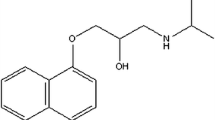Abstract
This paper presents the data and describes the Ca2+-dependent effect of the products of ω-oxidation of palmitic acid, as well as ω-hydroxypalmitic and α, ω-hexadecandioic acids, on rat erythrocytes. It is shown that in the presence of Ca2+ these acids induce aggregation of erythrocytes, which is accompanied by a reduction in the number of single cells in suspension. As well, a release of K+ from the cells occurs, which indicates the permeabilization of the plasma membrane. However, ω-hydroxypalmitic and α, ω-hexadecandioic acids are inferior to palmitic acid in their ability to induce Ca2+-dependent erythrocyte permeabilization. Bovine serum albumin and blood serum inhibit the effects of palmitic acid. At the same time, the influence of these agents on the effects of ω-hydroxypalmitic and α, ω-hexadecandioic acids appears to be much weaker. It is shown that ω-hydroxypalmitic and α, ω-hexadecandioic acids in the presence of Ca2+ induce an increase in the hydrodynamic diameter of single-walled lecithin liposomes, which indicates their fusion and (or) aggregation. The mechanisms of ω-hydroxypalmitic acid/Ca2+- and α, ω-hexadecandioic acid/Ca2+-induced effects on rat erythrocytes are discussed.
Similar content being viewed by others
References
P. Mukerjee and K. J. Musels, Critical Micelle Concentration of Aqueous Surfactant Systems, NSRDS-NBS 36 (National Bureau of Standards, Washington, DC, 1971).
A. Arouri and O. G. Mouritsen, Prog. Lipid Res. 52 (1), 130 (2013).
F. Kamp and J. A. Hamilton, Proc. Natl. Acad. Sci. USA 89, 11367 (1992).
F. F. Severin, I. I. Severina, Y. N. Antonenko, et al., Proc. Natl. Acad. Sci. U. S. A. 107 (2), 663 (2010).
A. Agafonov, E. Gritsenko, K. Belosludtsev, et al., Biochim. Biophys. Acta 1609, 163 (2003).
K. N. Belosludtsev, N. V. Belosludtseva, and G. D. Mironova, Biochemistry (Moscow) 70 (7), 815 (2005).
K. N. Belosludtsev, A. S. Trudovishnikov, N. V. Belosludtseva, et al., J. Membr. Biol. 237 (1), 9 (2010).
K. N. Belosludtsev and G. D. Mironova, Patol. Fiziol. Eksp. Terap. No. 3, 20 (2012).
R. J. Sanders, R. Ofman, F. Valianpour, et al., J. Lipid Res. 46, 1001 (2005).
R. J. Wanders, J. Komen, and S. Kemp, FEBS J. 278, 182 (2011).
M. Orellana, R. Rodrigo, and E. Valdes, Gen. Pharmacol. 31, 817 (1998).
J. H. Tonsgard and G. S. Getz, J. Clin. Invest. 76, 816 (1985).
J. H. Tonsgard, J. Pediatr. 109, 440 (1986).
C. Hu, S. Lin, and Z. Cai, Anal. Methods 6, 8207 (2014).
M. V. Dubinin, S. I. Adakeeva, and V. N. Samartsev, Biochemistry (Moscow) 78 (4), 412 (2013).
M. V. Dubinin, V. N. Samartsev, M. E. Astashev, et al., Eur. Biophys. J. 43 (10–11), 565 (2014).
A. V. Agafonov, E. N. Gritsenko, E. A. Shlyapnikova, et al., J. Membr. Biol. 215 (1), 57 (2007).
L. Wojtczak and P. Schönfeld, Biochim. Biophys. Acta 1183, 41 (1993).
S. Ferdinandusse, S. Denis, C. Van Roermund, et al., J. Lipid Res. 45, 1104 (2004).
L. V. Chernomordik and M. M. Kozlov, Nat. Struct. Mol. Biol. 15, 675 (2008).
J. A. Browning, J. C. Ellory, and J. S. Gibson, Contrib. Nephrol. 152, 241 (2006).
D. Papahadjopoulos, S. Nir, and N. Düzgünes, J. Bioenerg. Biomembr. 22, 157 (1990).
O. Baskurt, B. Neu, and H. J. Meiselman, Red Blood Cell Aggregation (CRC Press, Boca Raton, FL, 2011).
M. Zoratti and I. Szabo, Biochim. Biophys. Acta 1241, 139 (1995).
M. V. Dubinin, A. A Vedernikov, S. I. Adakeeva, et al., Biol. Membr. 30 (5–6), 364 (2013).
J. H. Tonsgard and S. C. Meredith, Biochem. J. 276, 569 (1991).
Author information
Authors and Affiliations
Corresponding author
Additional information
Original Russian Text © M.V. Dubinin, A.E. Stepanova, K.A. Scherbakov, V.N. Samartsev, K.N. Belosludtsev, 2016, published in Biofizika, 2016, Vol. 61, No. 5, pp. 916–921.
Rights and permissions
About this article
Cite this article
Dubinin, M.V., Stepanova, A.E., Scherbakov, K.A. et al. Ca2+-dependent aggregation and permeabilization of erythrocytes by ω-hydroxypalmitic and α, ω-hexadecandioic acids. BIOPHYSICS 61, 901–905 (2016). https://doi.org/10.1134/S0006350916050055
Received:
Published:
Issue Date:
DOI: https://doi.org/10.1134/S0006350916050055




